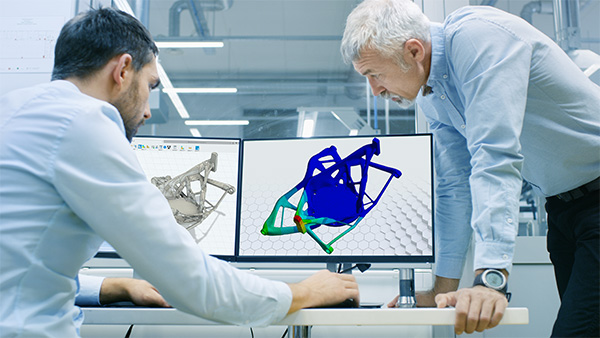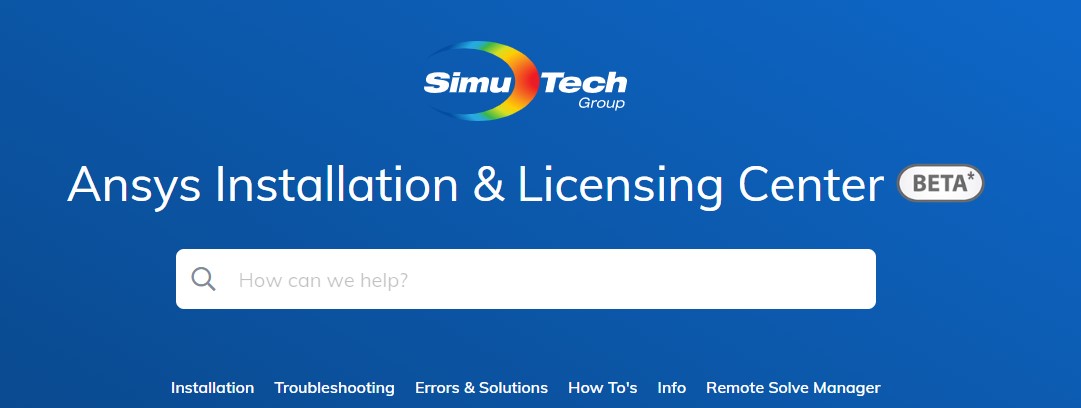Ansys Hardware Recommendations for Simulation Optimization across the various Ansys Product Suites
Hardware Recommendations | Ansys Software
This resource page includes Ansys Hardware Information, Ansys Hardware Recommendations, and miscellaneous Ansys Hardware Support. In short, the comprehensive suite of software places demands on computing and hardware resources that can vary significantly from one model to another.
Building for Performance Simulation
This article provides some high-level recommendations for purchasing computing hardware for simulation purposes. Factors that will determine the optimal computing hardware for your needs include:.
- Model physics (fluids, structures, electronics)
- Model size
- Model complexity
- Current hardware and solution times
- Budget

General Platform Support Recommendations
Mechanical Performance Considerations:
CPU (Processor):
- Solver is aided by AVX512 support, thus Intel CPUs based on Skylake-SP and Skylake-X or newer are recommended. Check Intel ARK Database for AVX512 Support (but not Xeon Phi series).
- Examples of recommended CPUs for HPC applications: i9-9920X or Xeon Gold 6136 (12 cores), Xeon Gold 6140 (18 cores * 2 = 36 cores)
- High core frequency is ideal, but actual frequency is dependent or core use, instruction set use, and adequate cooling. WikiChip is an excellent resource on turbo speeds.
Memory (RAM) considerations for Ansys Software:
- Memory capacity is very important. The model solution should be solving in RAM (“in-core”) and not paging to the hard drive (“out-of-core”). About 15 GB per million degrees of freedom is required, but this is approximate (45 GB per million solid nodes in structural analysis).
- Fastest memory (i.e. 2666 MHz for servers or 3200+ for i9 based desktops).
- To operate at maximum speed, all memory channels in both processors should be populated with equal amounts of memory.
- Note: Purchasing more RAM will alleviate I/O issues, as (1) the solver can use this memory to avoid doing as much I/O, and (2) the operating system can then use available RAM to cache or buffer these I/O that MAPDL writes.
Hard Drives:
- An SSD is highly recommended for all simulation work. NVMe SSDs are recommended when possible. Intermediate endurance levels are recommended (~0.3 DWPD), not QLC NAND.
- Note: For DMP, the program writes results files for every core in use, so having SSDs with a lower seek time will reduce waiting for the hard drive seeks to read/write to all those different files. It also assists with post-processing.
- Running large models out of RAM (“out-of-core”) will accelerate SSD wear (consume its write endurance) but is still preferable to not using an SSD.
Graphics:
The following cards are supported as of Ansys v19.2 (Please refer to Ansys Help and Ansys Platform Support for supported Graphic Card models):
- A mid-range graphics card (such as Nvidia Quadro P2000 and AMD Radeon Pro WX5100) can be used. These will not assist with solution time and only display graphics.
- Ansys maintains a list of tested graphics cards (other cards may/may not work as expected, but typically do work if of the same generation).
- Note: It is important to keep graphics drivers updated from the card’s vendor.
GPU (for solution acceleration processing):
The following cards are supported as of Ansys v19.2 (Please refer to Ansys GPU Accelerator Capabilities):
Interconnect:
- If clustering, a very high-speed interconnect is mandatory (40 Gb/s plus).
- QDR or FDR IB interconnect (or better) if you will be running on two or more nodes in parallel.
Ansys Mechanical – Example Recommendations:
- Workstation with NO HPC licenses: i7-9800X (8 cores) with 64/128GB DDR4-3200
- Workstation with 1 HPC Pack: i7-9920X (12 cores) with 128GB DDR4-3200
- Workstation with 2 HPC Packs: Dual Xeon Gold 6140 (36 cores total) with 192/384 GB DDR4-2666
(Individual hardware needs are dependent on various factors that increase or decrease requirements.)
Computational Fluid Dynamics (CFD) Performance Considerations:
CPU (Processor):
- Core scaling in CFD software is very good, therefore focus on Cores * Frequency = Effective Frequency, with slight bias towards frequency.
- Both AMD and Intel CPUs are recommended, as long as the latest generation (AMD Zen cores).
Memory (RAM):
- Recommended RAM quantity is simulation dependent, but general recommendation is 4-8 GB per core, with more for small core count systems.
- Memory bandwidth is very important, therefore get high frequency RAM (i.e. 2666 MHz or faster for non-servers).
- To operate at maximum speed, all memory channels in both processors should be populated with equal amounts of memory.
Hard Drives:
- SSD not as critical but is beneficial to the user experience. High endurance SSD is not strictly necessary.
- CFD does not do a lot of Disk I/O, so you can use SATA drives.
Graphics and GPU Acceleration:
See Mechanical recommendations above, no change.
Interconnect:
- 1 Gb/s interconnect is effective for small to medium clusters, investing in better can have a good return on investment.
Ansys CFD – Example Recommendations
- Workstation with NO HPC licenses: i7-8700K (6 cores) with 64GB RAM, Ryzen 7 2700X (8 cores) with 64GB RAM
- Workstation with 1 HPC Pack: i7-9920X (12 cores) with 64/128GB RAM, Threadripper 2950X (16 cores) with 64/128GB RAM
- Workstation with 2 HPC Packs: Dual Xeon Gold 6140 (36 cores total) with 192/384 GB RAM, Dual EPYC 7351 or 7371 (32 cores total) with 128/256 GB RAM
(Individual hardware needs are dependent on various factors that increase or decrease requirements.)
Electronics (EBU) Performance Considerations:
CPU (Processor):
- Look for latest generation CPUs with high frequency.
- Note: HFSS is primarily an in-core solver, so clock speed and RAM speed is important.
Memory (RAM):
- Recommended RAM is 8 GB per core HFSS, Maxwell, and other Electronic Packages or typically 64 GB – 256 GB.
- Memory bandwidth is important, therefore get high frequency RAM (i.e. 2666 MHz).
- To operate at maximum speed, all memory channels in both processors should be populated with equal amounts of memory.
Hard Drives:
- An SSD is highly recommended for all simulation work. NVMe SSDs are recommended when possible. Intermediate endurance levels are recommended (~0.3 DWPD), not QLC NAND.
Graphics and GPU Acceleration:
See Mechanical recommendations above, no change.
Interconnect:
- QDR or FDR IB interconnect if you will be running on 2 or more nodes in parallel (on a cluster, minimum 10Gb network)
Additional Ansys Hardware Resources:
Further details regarding Ansys platform support and hardware recommendations can be found in the Ansys Help and at the Ansys Platform Support webpage, which contains specific details regarding:
- Ansys Platform Support – Summary of Strategy and Plans
- Browser Support
- CAD Support
- 3Dconnexion Devices Certification
- GPU Accelerator and Co-Processor Capabilities
- Graphics Cards Tested
- Interconnects Support
- Job Schedulers & Queuing Systems Support
- Platform Support by Application
- Remote Display Support
SimuTech Group technical support is also available for additional Ansys hardware recommendations. We are glad to answer questions, or provide assistance with any ansys hardware upgrades or purchases.
Ansys Installation & Licensing Center FAQs


